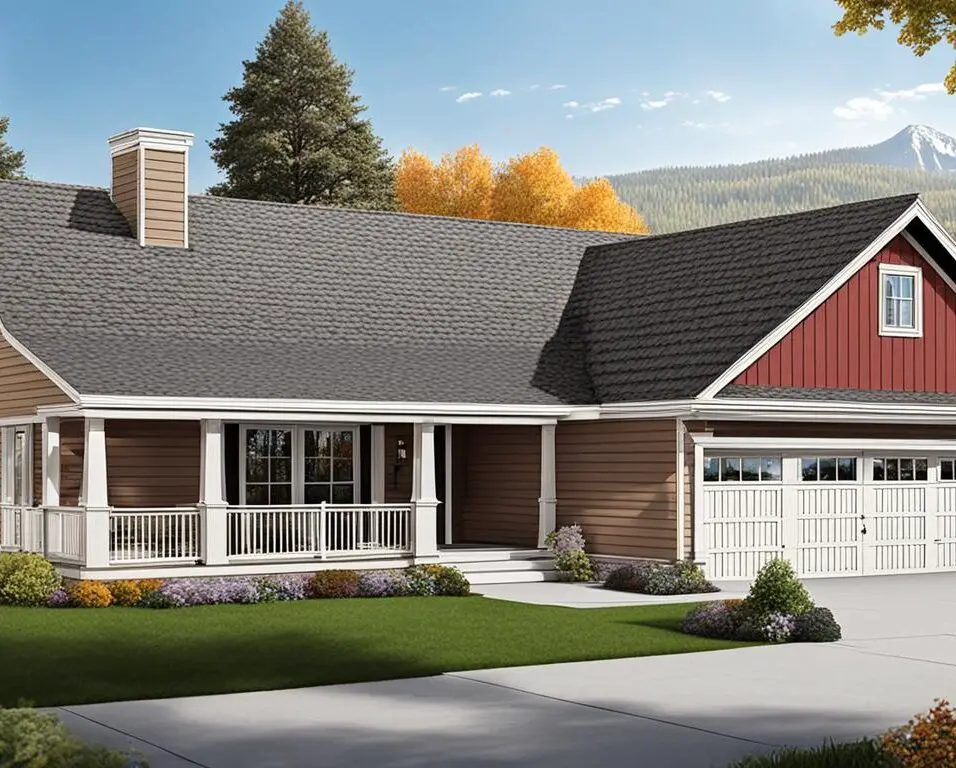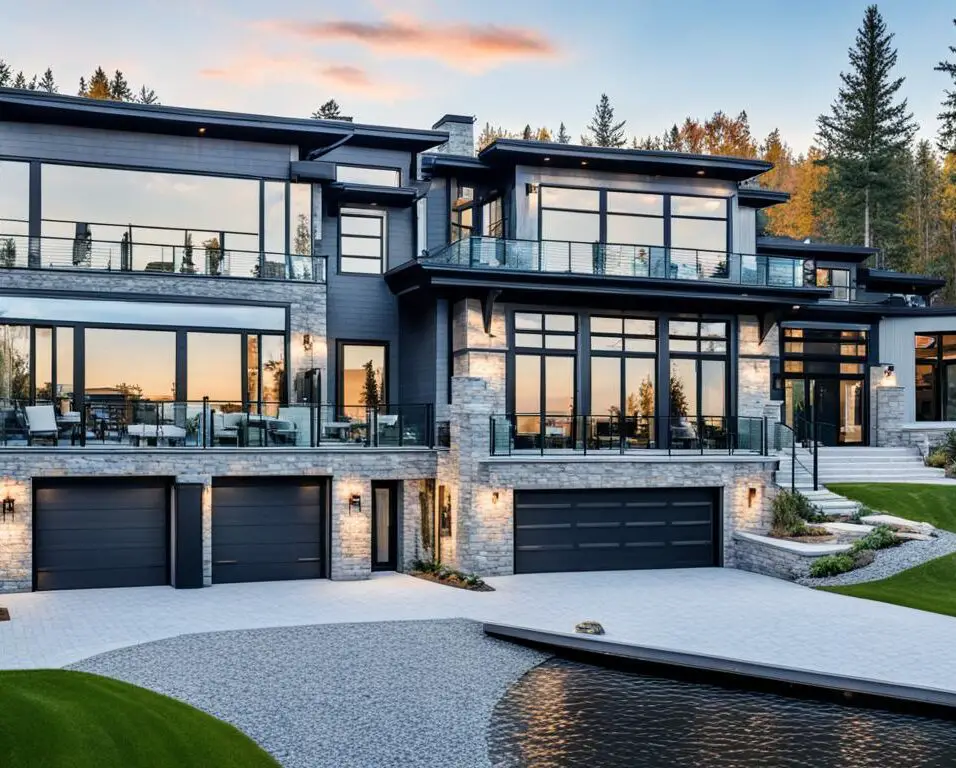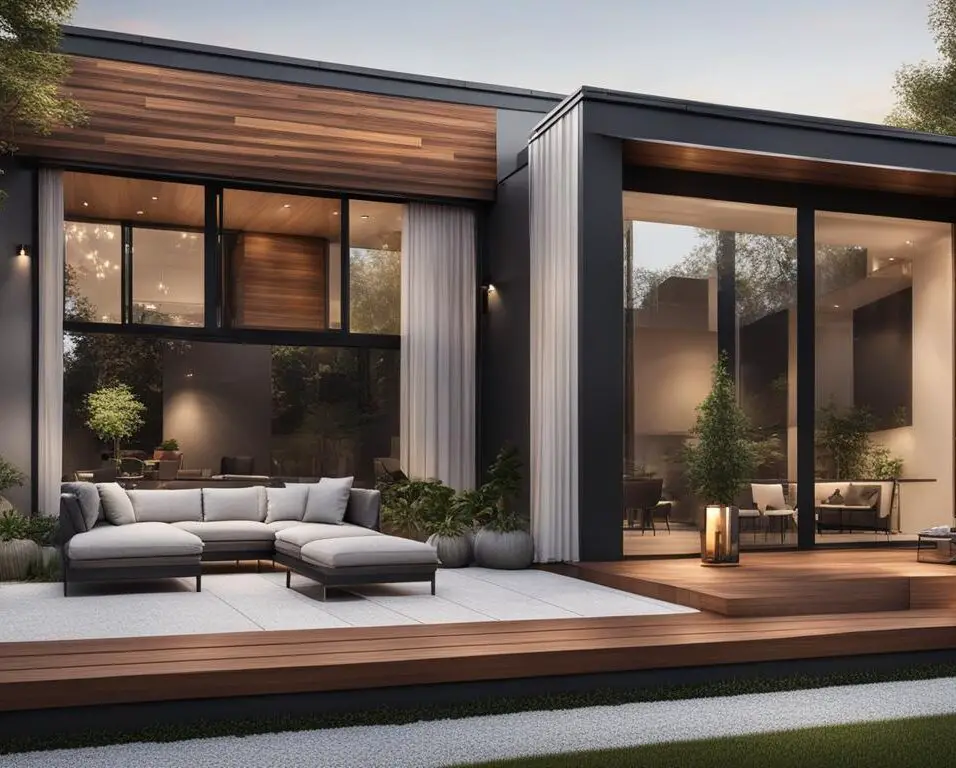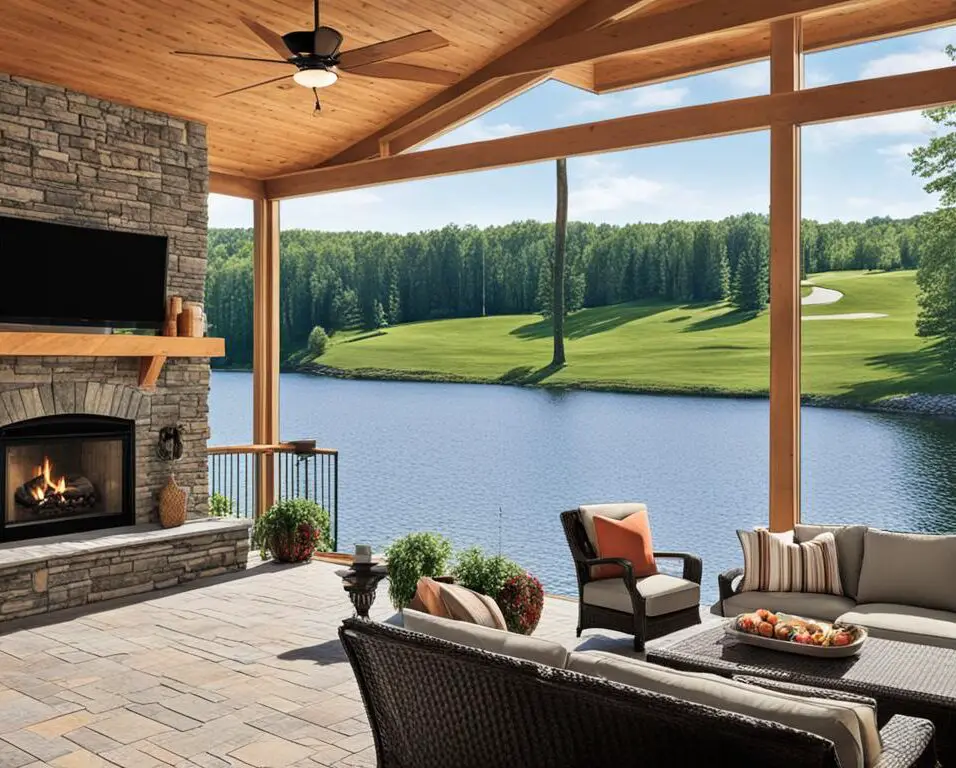How To Install Metal Roofing On A Shed
Introduction
How To Install Metal Roofing On A Shed: Measure the dimensions of your shed’s roof to determine the amount of metal roofing panels you will need. Using a chalk line, mark the positions of the panels on the roof, ensuring they are evenly spaced and aligned.
Now comes the actual installation of the metal roofing panels. Start at one corner of the roof and secure the first panel using roofing screws. Place the screws in the pre-drilled holes along the edges of the panel, ensuring they are tight but not over-tightened. Continue installing the panels one by one, overlapping them according to the manufacturer’s instructions. Trim any excess length using tin snips as needed.
Throughout the installation process, it is crucial to pay attention to safety. Always wear gloves and goggles to protect yourself from sharp edges and debris. Take necessary precautions when working at heights and ensure the ladder or scaffolding is stable and secure. Additionally, be mindful of the weather conditions and avoid installing metal roofing during windy or rainy days.

What do you put under a metal shed roof?
Option 1: Plywood or OSB Sheathing
One popular choice for underlayment is plywood or oriented strand board (OSB) sheathing. These materials offer a solid and stable base for the metal roof. Plywood is made from thin layers of wood veneer glued together, while OSB consists of compressed wood strands. Both options provide excellent strength and can withstand heavy loads. Additionally, they offer good insulation properties, helping to regulate the shed’s temperature.
Option 2: Synthetic Underlayment
Another option to consider is synthetic underlayment, such as synthetic felt or synthetic roofing underlayment. Synthetic underlayment is lightweight, easy to install, and provides a high level of durability. It also offers enhanced resistance to tearing and wrinkling, ensuring a long-lasting solution for your metal shed roof. However, it is important to follow the manufacturer’s guidelines for installation to ensure optimal performance.
Option 3: Insulation Panels
Insulation panels are typically made from foam or other insulating materials and can significantly improve energy efficiency. However, they may require additional installation steps and careful consideration of the shed’s ventilation to prevent condensation buildup.
Option 4: Metal Roofing Underlayment
For optimal protection against moisture and leaks, you can consider using metal roofing underlayment specifically designed for metal roofs. Metal roofing underlayment helps to prevent water infiltration and can also enhance the shed’s insulation properties.
Selecting the right underlayment for your metal shed roof is essential for its long-term performance and durability. Whether you choose plywood, synthetic underlayment, insulation panels, or metal roofing underlayment, each option has its advantages and considerations. It is crucial to assess your specific needs, budget, and climate conditions before making a decision. Additionally, proper installation and maintenance are key to ensuring the underlayment’s effectiveness. By carefully considering these factors, you can ensure that your metal shed roof remains protected and functional for years to come.
Can you install metal roof yourself?
Installing a metal roof can be a challenging task, but it is possible to do it yourself with the right knowledge and tools. Metal roofs are becoming increasingly popular due to their durability, energy efficiency, and aesthetic appeal. However, before embarking on a DIY metal roof installation project, it is important to consider several factors.
Firstly, it is crucial to assess your own skills and experience in roofing. While installing a metal roof may seem straightforward, it requires a certain level of expertise and precision. They can provide guidance and ensure that the installation is done correctly.
Secondly, you need to have the necessary tools and equipment. Installing a metal roof requires specific tools such as a drill, metal snips, a chalk line, and a ladder. It is important to have these tools readily available before starting the installation process. Additionally, you may need to purchase or rent specialized equipment depending on the complexity of the project.
Thirdly, it is essential to thoroughly research and understand the installation process. Metal roofs come in various types and styles, each with its own installation requirements. It is crucial to read the manufacturer’s instructions and follow them carefully. Additionally, there are numerous online resources, tutorials, and videos available that can provide step-by-step guidance on installing a metal roof.
Furthermore, safety should always be a top priority when working on a roofing project. Metal roofs can be slippery, especially when wet, so it is important to take necessary precautions. This includes wearing appropriate safety gear such as gloves, safety glasses, and non-slip footwear. It is also advisable to work with a partner to ensure stability and assistance when needed.
Do I need to put plywood under a metal roof?
Need plywood under metal roofs? If the roof interior is moisture-free, underlayment is not needed, however homeowners who want to insulate may put plywood.
Homeowners may ask if they need plywood under metal roof panels. This varies by metal roof type, condition, and local construction norms. This article explains when plywood is needed beneath metal roofs and when it is not.
Under the metal roof, plywood distributes its weight evenly. Sagging and buckling of metal panels can be avoided. Plywood provides a flat surface for metal panel attachment, ensuring a secure installation.
Though water-resistant, strong rain or ice dams can penetrate metal roofs. Water seeping through metal panels is prevented with plywood. Roof-damaging rot, mold, and other moisture issues can be avoided.
The metal roof can be put directly on top without plywood if the roof structure is good and passes local building codes. Metal roofing systems without plywood can be installed with battens or purlins. A skilled roofer should assess your metal roof installation demands.
Under metal roofs, plywood is recommended for stability and safety, but not always. This decision should take into account metal roof type, condition, and local construction codes. A skilled roofer will advise you on installation.
What is the best material to put under a metal roof?
Felt Underlayment (Asphalt Felt or Tar Paper)
Insulation:
One of the primary functions of the material placed under a metal roof is insulation. Insulation helps regulate the temperature inside the building, keeping it comfortable and energy-efficient. One popular choice for insulation is rigid foam boards. These boards are lightweight, easy to install, and offer excellent thermal resistance. They can effectively prevent heat transfer, keeping the interior cool in hot climates and warm in colder regions.
Moisture Barrier:
Another crucial aspect to consider when selecting the material for under a metal roof is its ability to act as a moisture barrier. Moisture buildup can lead to various issues, including mold growth, rotting, and structural damage. Therefore, it is essential to choose a material that effectively prevents moisture from seeping into the roof. One commonly used material for this purpose is synthetic underlayment. This type of underlayment is water-resistant, lightweight, and durable. It provides an additional layer of protection against water infiltration, ensuring the longevity of the metal roof.
Durability:
The material placed under a metal roof should also contribute to its overall durability. It should be able to withstand the weight of the metal panels and any external forces such as wind or hail. One durable option is high-density polyethylene (HDPE) underlayment. HDPE underlayment is tear-resistant, UV-stable, and can withstand extreme weather conditions. It acts as a protective layer, preventing any damage to the metal roof and enhancing its lifespan.
Cost-effectiveness:
The material under a metal roof should fit the budget. There are many high-quality possibilities, but performance and cost-effectiveness must be balanced. One inexpensive option is synthetic felt underlayment. Synthetic felt is cheaper than conventional materials yet still protects against moisture and insulates well. It’s ideal for budget-conscious underlayment users who don’t want to sacrifice quality.
Material under a metal roof should be chosen based on insulation, moisture resistance, durability, and cost. Popular underlayments include rigid foam boards, synthetic, HDPE, and synthetic felt. Through thorough evaluation and competent consultation, you can assure that the material you choose will perform well and prolong the life of your metal roof.
What layers go under metal roof?
There are three main types of underlayment for metal roofs. They include felt, synthetic sheet, and self-adhering membrane. Although there is no superior type, we’d like to help you find one that works best for you since they each have their own advantages and disadvantages.
A metal roof is a popular choice for many homeowners due to its durability, longevity, and aesthetic appeal. These layers serve various purposes, such as insulation, moisture protection, and structural support. In this article, we will explore the different layers that go under a metal roof and their significance in maintaining the roof’s integrity.
Insulation Layer:
One of the essential layers that go under a metal roof is the insulation layer. This layer helps regulate the temperature inside the building, preventing heat loss during colder months and heat gain during warmer months. Insulation also aids in reducing energy consumption and improving overall comfort. Common insulation materials used for metal roofs include fiberglass, foam boards, and reflective insulation.
Underlayment Layer:
The underlayment layer is another crucial component beneath a metal roof. It acts as a secondary barrier against moisture infiltration, protecting the roof deck and interior of the building from water damage. These materials provide excellent waterproofing properties and help prevent leaks caused by wind-driven rain or ice dams.
Ventilation Layer:
Adequate ventilation is vital for any roofing system, including metal roofs. The ventilation layer allows for the proper circulation of air, preventing the buildup of moisture and heat in the attic or roof space. This layer helps extend the lifespan of the metal roof by reducing the risk of condensation, mold growth, and structural damage. Ventilation can be achieved through ridge vents, soffit vents, or a combination of both, depending on the specific roof design and requirements.
Decking Layer:
The decking layer serves as the foundation for the metal roof.It also acts as a base for attaching the underlayment and metal panels securely.
A metal roof consists of several layers that work together to provide insulation, moisture protection, ventilation, and structural support. The insulation layer helps regulate temperature, while the underlayment layer acts as a barrier against moisture infiltration.Understanding the importance of these layers is crucial for ensuring the longevity and performance of a metal roof.
What are the step-by-step instructions for preparing the shed’s roof before installing the metal roofing?
Clean the roof: Start by removing any debris, dirt, or old roofing materials from the shed’s roof. Use a broom or a leaf blower to clear away loose particles. It is essential to have a clean and smooth surface for the metal roofing to adhere properly.
Inspect and repair: Thoroughly inspect the shed’s roof for any signs of damage or weak spots. Look for loose or missing shingles, rotting wood, or any other issues that may compromise the integrity of the roof. Repair or replace any damaged areas before proceeding with the installation.
Install underlayment: Next, apply a layer of underlayment to the shed’s roof. This acts as a moisture barrier and provides additional protection against leaks. Secure the underlayment using roofing nails or staples, ensuring it is properly aligned and covers the entire roof surface.
Measure and mark: Measure the dimensions of the shed’s roof accurately.
Use a tape measure to determine the length and width of each section.
Cut the metal roofing panels: Using tin snips or a metal cutting tool, carefully cut the marked metal roofing panels to the desired size. Take caution to make straight and clean cuts to ensure a professional-looking installation. Double-check the measurements before cutting to avoid any mistakes.
Pre-drill holes: Before securing the metal roofing panels to the shed’s roof, pre-drill holes along the edges and at regular intervals. This will prevent the panels from warping or buckling due to expansion and contraction caused by temperature changes.
Install the metal roofing: Finally, begin installing the metal roofing panels onto the shed’s roof. Start from one corner and work your way across, overlapping each panel to ensure proper water drainage.
How do you properly measure and cut the metal roofing panels to fit the shed’s roof?
When it comes to measuring and cutting metal roofing panels for your shed, precision is key to ensure a proper fit and a successful installation. Here are the steps to follow:
Measure the dimensions: Begin by measuring the length and width of your shed’s roof. Take accurate measurements at multiple points to account for any variations. It’s crucial to measure from the eave to the ridge, as well as the overhangs on each side.
Calculate the panel size: Once you have the measurements, determine the size of the metal roofing panels needed. Consider the panel overlap and the type of metal roofing profile you are using. It’s recommended to consult the manufacturer’s guidelines for the specific panel size and overlap requirements.
Mark and cut the panels: Using a straight edge and a marker, mark the measurements on the metal roofing panels. To cut the panels, you can use tin snips or a circular saw with a metal-cutting blade. Take your time and make precise cuts along the marked lines.
Trim the edges: After cutting the panels to the desired size, it’s important to trim the edges for a clean and professional finish. Use a metal file or a deburring tool to remove any sharp edges or burrs that may be present.
By following these steps and taking the necessary precautions, you can accurately measure and cut the metal roofing panels to fit your shed’s roof, ensuring a secure and aesthetically pleasing installation.
What are the recommended techniques for securing the metal roofing panels to the shed’s roof?
A sturdy installation requires attaching the metal roofing panels to the shed’s roof. Several methods are advised for secure attachment:
Screw Fastening: Screwing metal roofing panels to the shed’s roof is a frequent and successful approach. Self-tapping screws with neoprene washers are essential for metal roofing. These screws should be put at panel ridges or high spots to prevent water penetration.
Clip Fastening: Metal roofing clips secure panels. The metal panels are snapped into these clips after they’re affixed to the roof. This approach allows metal panels to expand and contract due to temperature variations while providing a secure and consistent attachment.
Occasionally, adhesive bonding can be utilized to secure metal roofing panels. This entails putting high-quality adhesive to the panels’ undersides before mounting them on the roof. Take care to use a metal roofing adhesive and follow the manufacturer’s directions.
These recommended methods for mounting metal roofing panels to the shed’s roof will ensure a sturdy and reliable installation that will survive weather and safeguard your shed for years.
What are the recommended techniques for securing the metal roofing panels to the shed’s roof?
When it comes to securing metal roofing panels to a shed’s roof, there are a few recommended techniques that ensure a secure and long-lasting installation. Firstly, it is crucial to use the appropriate fasteners for metal roofing, such as screws or nails specifically designed for this purpose. These fasteners should have a neoprene washer or a rubber gasket to provide a watertight seal and prevent leaks.
Before securing the panels, it is important to properly align and overlap them according to the manufacturer’s instructions. This ensures that the panels interlock correctly and create a strong barrier against the elements. Additionally, using a chalk line or a straight edge can help maintain straight rows and ensure a professional-looking installation.
When fastening the panels, it is recommended to start at one end of the shed’s roof and work your way towards the other end. This helps to prevent any misalignment or gaps between the panels. It is crucial to drive the fasteners into the raised ridges or high points of the metal roofing panels, as this provides better resistance against wind uplift and helps to maintain the structural integrity of the roof.

Conclusion
Once you have all the materials ready, it is crucial to prepare the shed roof properly. This involves removing any existing roofing material, cleaning the surface, and repairing any damages or leaks. It is also important to ensure that the roof is structurally sound and capable of supporting the weight of the metal roofing. If needed, additional support can be added to strengthen the shed’s roof structure.
After preparing the roof, the next step is to install metal roof panels. This should be done carefully and accurately to ensure a watertight and secure installation. Start by laying the first panel at the bottom edge of the roof, making sure it is aligned properly. Use screws and sealant to secure the panel in place, following the manufacturer’s instructions. Repeat this process for each panel, overlapping them correctly to prevent water infiltration.
Installing metal roofing on a shed is a straightforward process that can greatly enhance the shed’s durability and appearance. By following the right instructions and taking the necessary precautions, you can successfully complete this project and enjoy the benefits of a long-lasting and low-maintenance roofing solution. Remember to gather all the necessary materials and tools, properly prepare the shed roof, and accurately install the metal roofing panels. With proper installation, your shed will be well-protected from the elements and will maintain its structural integrity for years to come.








